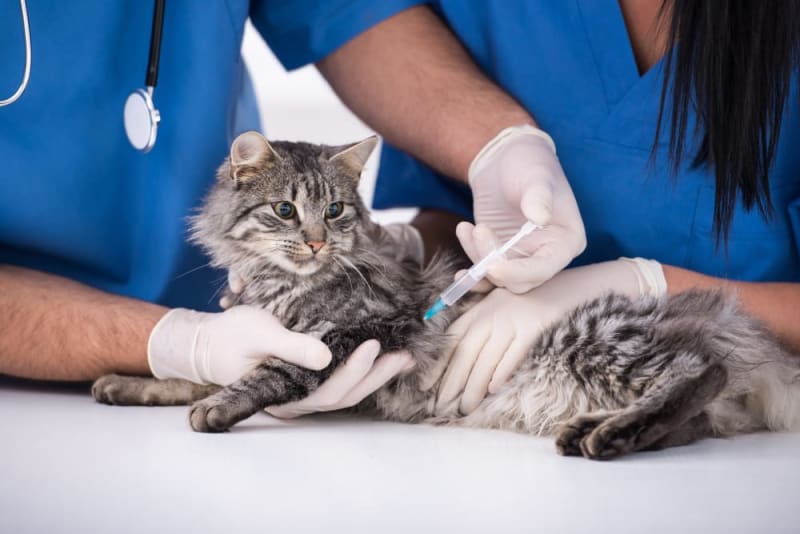- Law: It is unlawful to treat an animal in a way that causes unnecessary pain, suffering, or death. (read full version)
- Explanation:
Title 7: AGRICULTURE AND ANIMALS
Part 9: ANIMAL WELFARE
Chapter 739: CRUELTY TO ANIMALS
§4011. Cruelty to Animals
The laws under §4011 are designed to protect animals in Maine from cruel treatment. This section outlines various behaviors that qualify as cruelty to animals and specifies the legal actions that can be taken against individuals who engage in such conduct. It also provides guidelines for acceptable actions, such as euthanasia, and addresses affirmative defenses where certain conduct may be exempt from penalties.
Acts Constituting Animal Cruelty
The statute defines cruelty to animals with a range of actions, including physical harm, deprivation of basic needs, and improper killing methods. The law applies to any person, including an animal’s owner or the owner’s agent. The following are some key behaviors that qualify as cruelty:
Killing or Attempting to Kill an Animal Without Consent
Anyone who kills or tries to kill an animal that belongs to another person, without the owner’s consent or legal privilege, is guilty of animal cruelty. This protects pets and livestock from unauthorized harm or fatal injuries caused by others.
Inhumane Killing Methods
Except for licensed veterinarians or certified professionals under Title 17, section 1042, no one may kill an animal using a method that fails to cause instantaneous death. Furthermore, veterinarians or certified individuals must conform to standards set by a national veterinary association. This ensures that euthanasia and other forms of animal death are carried out humanely.
Torture and Abuse
The law also prohibits acts of torture, torment, or intentional mutilation of animals. It is illegal to give drugs, poison, or alcohol to animals with the intent to harm them. Additionally, if an animal is found trespassing on private property, the owner of that property may use reasonable force to remove the animal, but cruelty or harm must not be inflicted.
Deprivation and Neglect
Lack of Necessary Sustenance and Care
Owners must provide their animals with necessary food, medical attention, clean conditions, and appropriate shelter. Depriving an animal of these basic needs constitutes cruelty. This ensures that animals are not left to suffer due to neglect and that their well-being is prioritized.
Leaving Animals on Barren Islands
The law specifically addresses the abandonment of domestic animals on uninhabited or barren islands along the Maine coast. During the winter months (December through March), it is illegal to leave an animal on such islands without ensuring that it has proper shelter and sustenance. This provision aims to prevent animals from being stranded in harsh, isolated environments.
Prohibited Uses of Animals for Hunting and Performance Enhancement
Illegal Hunting Practices
Hunting or trapping animals, unless permitted by the law (such as under chapter 202-A and Title 12, Part 13), is also considered animal cruelty. The sale of animals for hunting purposes is similarly prohibited, except where humane trapping is conducted for population control or animal control efforts.
Performance-Enhancing Substances
Injecting substances into animals to artificially enhance their performance is illegal, particularly when these substances are harmful. This includes, but is not limited to, excessive sodium bicarbonate used in equines for competitive purposes. By outlawing this practice, the law seeks to prevent animal abuse in competitive sports.
Acts of Violence Against Animals for Intimidation
Using Animals to Intimidate or Frighten
The law also criminalizes the killing or torture of animals as a means to intimidate or frighten others. Forcing a person to injure or kill an animal is similarly prohibited. This provision addresses situations where animals are used as tools in psychological abuse or violence.
Confinement in Extreme Conditions
Exposure to Harmful Weather Conditions
It is illegal to confine an animal in an enclosed space—such as a building, vehicle, or boat—where extreme heat or cold could harm its health. This aspect of the law ensures that animals are protected from the dangers of being left in extreme weather conditions, particularly in situations where they are unable to escape or protect themselves.
Animal Cruelty and Euthanasia
The law provides specific guidelines on how euthanasia can be conducted for cats and dogs. Under subsection 1-A, it is generally illegal for a person to kill a cat or dog, with some exceptions:
Licensed Veterinarians and Certified Professionals
Licensed veterinarians or individuals certified under Title 17, section 1042, are allowed to euthanize animals according to accepted methods of euthanasia. These standards ensure that the process is carried out humanely, without causing unnecessary suffering to the animal.
Owner-Led Euthanasia by Firearm
A pet owner or the owner’s agent may also euthanize their own cat or dog by shooting it with a firearm, provided certain conditions are met. These include ensuring that the shooting is done by someone at least 18 years of age, using a weapon capable of causing instantaneous death. Additionally, precautions must be taken to protect public safety, and the animal must not experience undue suffering during restraint.
Affirmative Defenses to Animal Cruelty
The law provides several affirmative defenses for those accused of animal cruelty. These defenses clarify situations where certain actions may not constitute a criminal offense:
Veterinarian and Research Exemptions
If a licensed veterinarian carries out the conduct or if the action is part of scientific research governed by accepted standards, the individual is exempt from animal cruelty charges. This acknowledges the role of veterinarians in providing necessary medical procedures that may otherwise appear harmful.
Pest Control on Personal Property
Actions taken to control or eliminate common pests, such as rodents or ants, on the defendant’s own property are also exempt from cruelty charges. This defense ensures that property owners can manage pests without fear of legal repercussions.
Use of Live Animals as Bait
In certain cases, using live animals as bait or for training purposes may be permissible under the law, provided it complies with the rules of the Department of Inland Fisheries and Wildlife. This exemption primarily applies to hunting and training activities where live animals are commonly used.
Agricultural Operations and Best Practices
Lastly, animals kept as part of an agricultural operation are exempt from cruelty laws as long as they are managed in compliance with best practices for animal husbandry. These practices are determined by the Department of Agriculture and ensure that animals raised for food or other agricultural purposes are treated humanely.
Conclusion
Maine’s animal cruelty laws under §4011 provide comprehensive protection for animals, while also outlining specific guidelines for humane treatment and euthanasia. These laws ensure that individuals who harm, neglect, or mistreat animals face legal consequences, while also protecting those who follow best practices in veterinary care, research, pest control, and agriculture. Through these provisions, the state seeks to uphold both animal welfare and public safety.
Section History
This section of the law has evolved since its introduction in 1987. Numerous amendments over the years, including updates in 1995, 1997, 1999, 2001, 2007, 2013, and 2019, have refined and expanded the legal definitions and penalties associated with animal cruelty. These changes reflect the state’s ongoing commitment to animal welfare and humane treatment standards.
- Penalties: Animal cruelty offenses can result in heavy fines and imprisonment.




